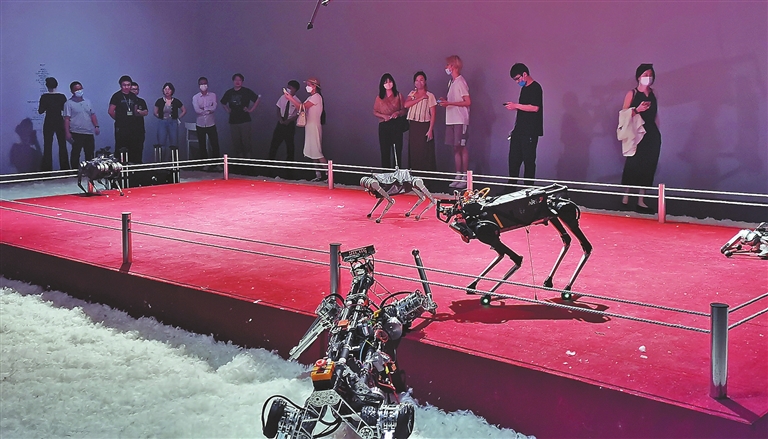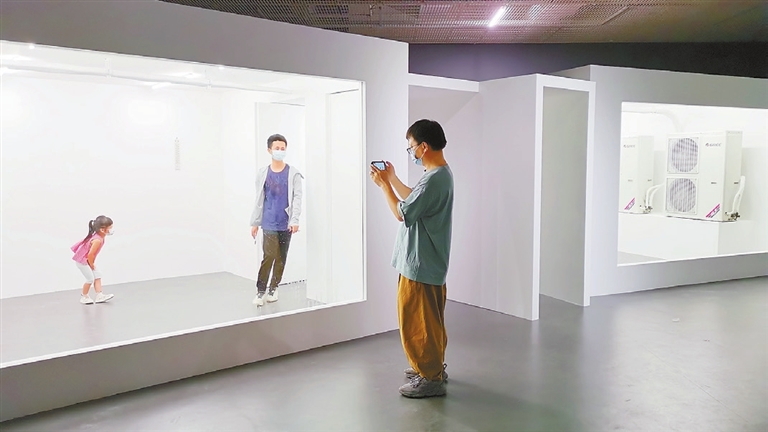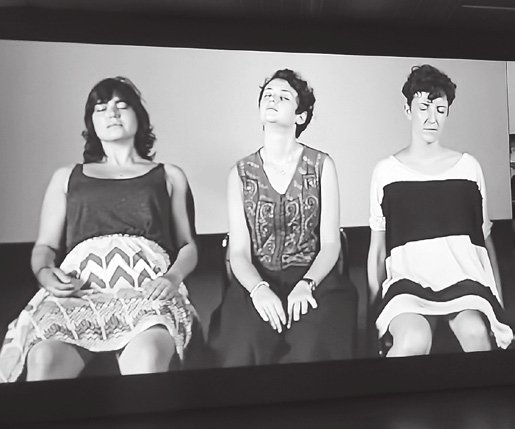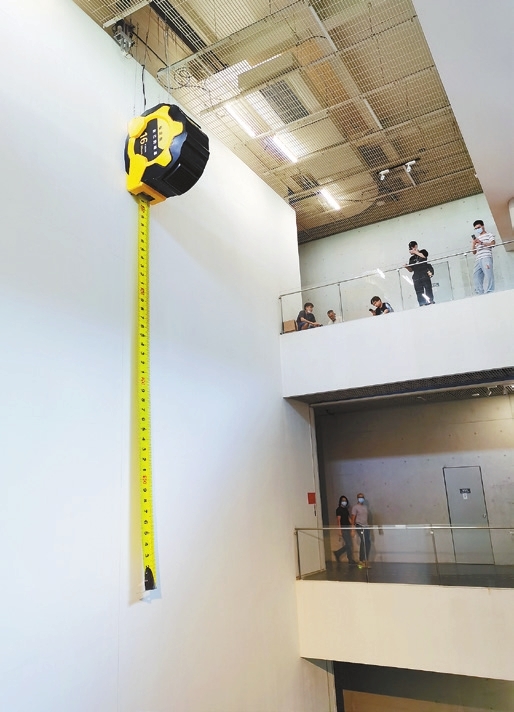




Cao Zhen caozhen0806@126.com Climate change-themed artworks are not new and now in Chinese artist Shen Shaomin’s latest art installations to illustrate this threat, he only uses ordinary air conditioners to provide viewers a unique way to re-experience this summer’s record-breaking heat wave at his exhibition. “Shen Shaomin’s Brief History of Science,” which opened Saturday at the Pingshan Art Museum, reflects the artist’s understanding of the world including his doubts on scientific development. For the “Nature Under Control” artwork, Shen placed evaporators and condensers from large-power air conditioners in two small rooms with one room being cold as the evaporators cool down the air while the other is scorching hot due to the heat released by the condensers. When visitors enter the two rooms, they will experience the cool and hot temperatures caused by energy consumption. “You warm up the city’s sitting room and cool down your own bedroom” is one way the artist describes this work. Shen developed his manual skills in his childhood in Northeast China, an area known for heavy industry. When he self-learned print art in his hometown in Heilongjiang, he experimented with many kinds of materials, which later influenced him in creating artworks in various forms, from sculpture to painting, from video and installation to performance art. After migrating to Australia where he visited several bone exhibitions in nature museums, he returned to China and gained a reputation in the 2000s for his giant bone sculptures alluding to contemporary issues of genetic modification and consequence of environmental threat. His bonsai series was a commentary on the brutality with which humans control their environment. Wires, pulleys, cages and other tools attached on the plants make them appear tortured. Shen’s works are wondrous, frightening and strange; his art is designed to make people think about human desire and the impact they have on the world. Shen has also lived in Daqing, Beijing and Guangzhou. Three years ago, he settled in Shenzhen and established the Joint Laboratory of Science and Art in collaboration with the Shenzhen Institute of Artificial Intelligence and Robotics for Society. “The themes of Shen’s works reflect great scientific changes taking place in the second half of the 20th century, including the industrial leaps of the Daqing Oilfield, the rapid development of aerospace technologies, the advances in biotechnology as well as the rise of high-tech industries in Shenzhen,” the exhibition curator Cui Cancan wrote in the exhibition profile. “Shen used a wide spectrum of materials to conceptualize his art, including bones, sea salt, wood, specimens, plants, measuring tools, large industrial machinery, daily household appliances, computers and robots, etc., covering various disciplines ranging from art, poetry, history, documentary and sound to science and technology,” he added. This exhibition features Shen’s creations from recent years, focusing on three fields: art, poetry and science, which not only extends his early exploration of the relationship between art and science, but also presents the artist’s unique interdisciplinary perspective. He believes failures and futility are the most significant parts of scientific development because they can trigger deeper thoughts. When the public is enthralled by various generations of Boston Dynamics’ robot dog Spot, Shen has noticed those iterations left behind by the times, so in his mechanical installation “Arena,” he places several quadruped robots on and off a boxing arena, some energetically jumping while some tottering to their last gasp. “The robot theater reflects on life and death. In the future, where do we belong and where will we go?” the artist asks. Two artworks seem absurd but exude Shen’s whimsical interrogations. In “I Am My Own Result,” two giant tapelines measure each other’s lengths. “Measure a standard with a standard; which is the standard?” In “I Draw Myself With Myself,” a sketch of a huge ballpoint pen was drawn with numerous ballpoint pens and to draw a huge pencil Shen used a great number of pencils. Likewise, the artist asserts that magnifying “self” will consume lots of “selves.” At the exhibition,visitors can also take time to explore a walk-in maze and take the challenge of finding its exit out. In the maze, titled “Farewell to Myself,” there’s a mirror equipped with AI algorithms capturing figures in real time. When visitors approach the mirror, they can see themselves waving goodbye. “Shen Shaomin’s Brief History of Science” is the third exhibition of Pingshan Art Museum’s Shenzhen Contemporary Artists Series. It’s free and the ending date has not yet been announced. Booking: WeChat account “PingshanArtMuseum” Venue: Pingshan Art Museum, Huide Road, Pingshan District (坪山区汇德路坪山美术馆) Metro: Line 3 to Shuanglong Station (双龙站), Exit D and then take a bus or taxi | 
